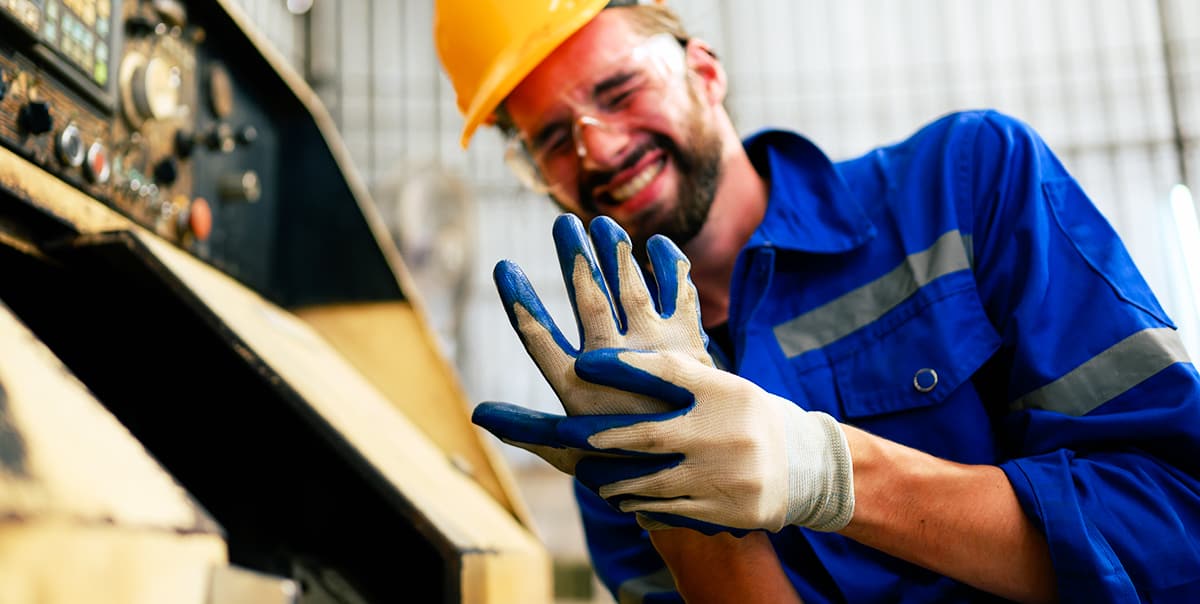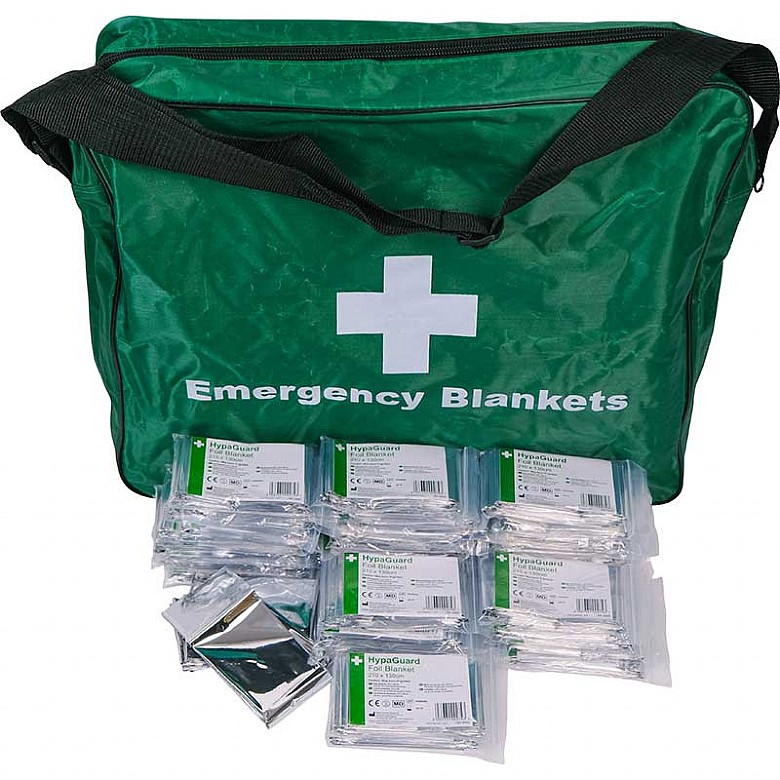
Workplace injury rates are not often the first criteria one considers when looking for a new job, but it may be more important than you think. Different industries present a variety of risks and keeping these in mind is important when thinking about new employment.
For example, workers in an office may experience eyesight deterioration from computer screens or carpal tunnel from extended mouse misuse. Construction workers may face serious risk of injury from machinery or dangerous construction materials, and commercial fishmen run the risk of being swept overboard in rough seas.
Risk assessments need to be carried out in every business to dictate what standards and provisions need to be in place to maintain a safe and healthy work environment.
Staying safe at work: 5 reasons why Health & Safety is important

Nearly 200 workers are fatally injured every year in workplace accidents and over a million workers receive non-fatal injuries. Over two million people suffer from illnesses that were directly caused by or made worse by their job.
Preventing accidents and injuries should be the priority in every workplace. Employees are the lifeblood of any business and ensuring their wellbeing is vital for effective operation. Here are five reasons you should emphasize health & safety in your workplace:
1. It's morally right
Employers have a moral obligation to ensure that employees are operating in a safe working environment. It is amoral to put your employees at risk of being injured – employees and employers rely on each other for mutual benefit and employees need a safe environment to operate effectively.2. It increases productivity
Improving working conditions in your business improves morale and allows employees to work uninhibited. Proper training develops a positive organisational culture where safe, healthy and efficient working becomes second nature to your employees.3. Legal obligation
There are laws and regulations in place in the UK to guarantee that all work environments are safe. Breaches of these legal obligations can result in fines, prosecution and in some cases imprisonment of senior management.4. It saves money
Health & Safety training helps you avoid the financial and intangible costs of accidents and workplace injuries. Insurance doesn’t cover all losses – workplace accidents often also result in lost productivity, damaged goods and staff demotivation.5. It's important for the reputation of your business
Ensuring good health & safety practices are observed has intangible benefits your business. Building a positive reputation as an employer is important to employee retention and the overall health of your company.Latest stats on workplace accidents and injuries
- There were 1.8 million workers in the UK who suffered from work-related illnesses in 2022, including
- 914,000 working people who suffered from work-related stress, depression or anxiety
- 477,000 workers who suffered from a work-related musculoskeletal disorder
- 123,000 workers who suffered from COVID-19 they believe was contracted due to exposure to the virus at work
- The Labour Force Survey reports 565,000 workers sustained an injury at work
- 61,713 injuries to employees were reported under RIDDOR (Find out more about what injuries fall under RIDDOR)
- 2,544 workers died from mesothelioma as a result of asbestos exposure in the past (stat from 2020)
- 123 workers received fatal injuries from work-related accidents
- A total of 36.8 million working days were lost in 2022 due to work-related injuries and illnesses
- An estimated £18.8 billion were lost to workplace injuries and ill health from working conditions
Non-fatal UK workplace accident stats
According to self-reports from the Labour Force Survey, 565,000 workers sustained a non-fatal injury at work in 2022, and 61,713 non-fatal injuries were reported under RIDDOR by employers. Of these, around 150,000 injuries resulted in over seven days of work missed.The most common non-fatal accidents in UK workplaces in 2022:
- Slips, trips and falls on level ground – 30% of accidents
- Handling, lifting or carrying objects – 18% of accidents
- Being Struck by a moving object – 11% of accidents
- Acts of violence – 9% of accidents
- Falls from a height – 8% of accidents
Fatal workplace accident stats in the UK
According to RIDDOR reports, 123 workers received fatal injuries in the UK in 2022. Of these, 29 casualties were aged 60 and over, and 93 casualties were aged 16-59. One casualty’s age was unknown.The most common fatal accidents in UK workplaces in 2022:
- Construction – 30 fatal injuries
- Agriculture, forestry and fishing – 22 fatal injuries
- Manufacturing – 22 fatal injuries
- Transport and storage – 16 fatal injuries
- Admin and support services – 12 fatal injuries
- Wholesale, retail, motor repair; Accommodation and food – 11 fatal injuries
- Waste and recycling – 1 fatal injury
- Other industry – 9 fatal injuries
The top 3 most dangerous industries by accident rates
1. Construction

Statistics show that construction is the most dangerous industry to work in in the UK. High scaffolding, large machinery, cranes and other essential tools drastically increase the risk of injury on construction sites. In 2022, there were 30 fatal injuries on the job in construction. While this is a high number of deaths, construction is a very large industry. When the total number of injuries is compared to the number of construction workers, the rate of fatalities comes to 1.47 deaths per 100,000 employees – a relatively low number.
Construction sites are some of the most hazardous work environments in any industry – large machinery, the moving of heavy materials and other unique hazards make them especially dangerous. Luckily, construction has some of the most comprehensive safety guidance of any industry, ensuring accidents happen as rarely as possible.
Slips, trips and Falls
Incomplete floors and roofs, unsupported structures, loose construction material and debris all increase the risk of slips, trips and falls on a construction site. Ladders and scaffolding also present a risk of serious injury from falls.Explosions and fires
Construction sites are usually home to flammable materials, chemicals, electrical work and semi-complete piping systems, all which increase the risk of fires and explosions.Physical exertion
Construction is a physically demanding job, and sites are often outdoors with the possibility of workers being exposed to extreme weather. Heavy lifting and operating machinery also carry a risk of serious injury.Falling objects
Large vehicles, machinery and heavy construction materials are all common sights on a construction site, and any of these pose a risk of falling on or colliding with a worker – potentially fatally wounding them.2. Agriculture, forestry and fishing

Agricultural work is physically demanding by nature. Combine this fact with difficult terrain, exposure to extreme weather conditions, worker fatigue and potentially dangerous equipment, and it’s no surprise that the agriculture, forestry and fishing industry is in second place. In 2022, there were 22 fatal injuries in the industry. Because of its relatively small workforce population, the rate of fatalities comes to a whopping 8.01 deaths per 100,000 workers.
Heavy equipment
Ploughs, tractors and other large farm equipment can be dangerous and require proper training to operate safely. Most tractors don’t have seatbelts and can tip over surprisingly easily, especially on uneven terrain. For this reason, around 44% of agriculture industry accidents involve a tractor.Exposure to pesticides
Crops are often sprayed liberally with pesticides using crop-dusters, crop-sprayers and other machinery. These chemicals linger in the air long after they’re sprayed, and exposure can cause a variety of adverse health effects from minor skin irritation to hearing loss, reproductive issues and even cancer.Asphyxiation or suffocation
Silos and other grain storage facilities are often poorly ventilated, and food products like soybeans and wheat produce a fine powder that makes breathing difficult. There have even been cases of farm workers falling into grain in a silo, suffocating as a result.Crashing, sinking or capsizing
Most fatal injuries in the fishing industry come as a result of the fishing vessel capsizing or completely sinking. Rough seas can often tip boats, and collisions with tankers and oil rigs happen occasionally.Injuries from animals
Large animals commonly found on farms pose a risk of injury to farm workers. Angry cattle can be dangerous and have often trampled farm workers, sometimes fatally injuring them as a result.3. Manufacturing

The manufacturing industry accounts for around 8% of the UK workforce, employing millions of workers every year. While the majority of these workers enjoy a safe environment, deviation from strict health & safety guidelines often leads to injury in this line of work.
Dangerous chemicals and large machinery used in many manufacturing processes makes this industry risky. Different kinds of manufacturing pose different risks than others. For example, metalworkers need to use large machinery and heat metal to very high temperatures to shape it, and woodworkers need to use sharp saws to carve wood into the desired shapes.
In 2022, there were 22 fatal injuries in the manufacturing industry. That is 0.81 fatal injuries for every 100,000 workers – a number kept low by strict health and safety regulations.
Contact with moving machinery
Whether it’s a wood saw, hydraulic press, nail gun or even a forklift, the risk of serious injury is always present. These kinds of injuries involve many factors, including employee error, poor judgement or workers simply fooling around with dangerous equipment.Falls from a height
Falls from height are one of the leading causes of fatal injuries in every industry, and the vast majority of falls are from ladders. Injuries usually occur as a result of insecure foot placement, improper ladder setup or ladders being knocked over. These kinds of accidents often lead to serious injury or death, which is why Health & Safety training places a heavy emphasis on preventing falls from height.Struck by an object
Manufacturing work environments are often home to heavy industrial materials that are constantly being transported and worked with. When dangerous objects fall, nearby workers can easily be injured. Sharp tools like box cutters and knives also pose a danger if used improperly.Ensuring safety is a priority at work
Ensuring your workplace has received the proper health & safety training and employs the correct RIDDOR procedures is paramount to smooth operations. Health & safety training should be supplanted with adequate first aid provisions, capable of meeting your business’s needs as dictated by a risk assessment.
Helpful Resources
- Accident Reporting in the Workplace: Procedures and Forms
- Safety and First Aid Signs and Posters for the Workplace
- What First Aid Requirements do Workplaces Need to Meet?
- What First Aid Kit Do I Need For My Workplace?
- Workplace Automated External Defibrillator (AED): Cardiac Arrest
Read our other blogs for more information on first aid or contact us for further advice and information on our products.
About the author:
Jo Stokes is a writer, marketer and trained first aider at First Aid Online.
Find out more about Jo.
By Jo Stokes
Explore more: Workplace first aid & safety





